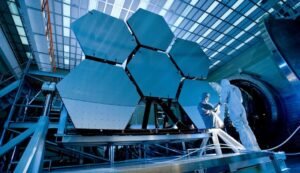Production Efficiency in Biology
Introduction
Production efficiency is a crucial concept in biology that refers to the ratio of useful output to the amount of input used during a biological process. It plays a vital role in understanding and optimizing various biological systems, ranging from metabolic pathways to ecosystems. Maximizing production efficiency has significant implications for sustainable resource utilization, food production, and environmental conservation.
Key Takeaways
- Production efficiency measures the ratio of useful output to input in biological processes.
- Optimizing production efficiency is essential for sustainable resource utilization.
- It plays a crucial role in food production and environmental conservation.
- The concept applies to various biological systems, from metabolic pathways to ecosystems.
Production Efficiency in Action
In biological systems, the use of energy and resources should be as efficient as possible to ensure optimal functionality. For example, in photosynthesis, plants utilize light energy, water, and carbon dioxide to produce glucose and oxygen. The production efficiency of this process can be measured by quantifying the amount of glucose produced per unit of input resources, such as sunlight and water. *Understanding the underlying factors that influence production efficiency in different biological systems has significant practical implications in fields such as agriculture and energy production.*
Factors Affecting Production Efficiency
Several factors can impact production efficiency in biology. These include the availability of resources, genetic traits, environmental conditions, and interactions between organisms. *Genetic diversity within a population can contribute to higher production efficiency by allowing for adaptation to different environmental conditions and nutrient availability*. Additionally, resource availability and interactions between organisms can influence the efficiency of nutrient uptake, energy transfer, and reproductive success.
Understanding these factors and their interactions is crucial for optimizing production efficiency in biological systems. By identifying the key variables that affect efficiency, researchers and practitioners can develop strategies to improve production efficiency in various contexts, such as crop yield enhancement, livestock management, and ecological restoration.
Examples of Production Efficiency
Table 1: Comparative Efficiency of Photosynthesis in Different Plant Species
| Plant Species | Efficiency (glucose produced per unit of light energy) |
|---|---|
| Plant A | 2.5 |
| Plant B | 3.1 |
| Plant C | 2.8 |
Table 1 compares the production efficiency of photosynthesis in different plant species. It demonstrates that plant B has the highest efficiency, producing 3.1 units of glucose per unit of light energy. These variations in efficiency can inform breeding programs and cultivation practices to enhance crop productivity and optimize resource utilization.
Table 2: Energy Efficiency of ATP Synthesis in Mitochondria
| Organism | Energy Efficiency (%) |
|---|---|
| Human | 40 |
| Mouse | 35 |
| Fruit Fly | 20 |
Table 2 provides insights into the energy efficiency of ATP synthesis in different organisms. It highlights that humans have a higher energy efficiency compared to fruit flies, which can inform biomedical research and the development of energy-efficient technologies.
Table 3: Conversion Efficiency of Biomass into Ethanol by Microbes
| Microorganism | Conversion Efficiency (%) |
|---|---|
| Bacteria A | 45 |
| Bacteria B | 52 |
| Fungus A | 35 |
Table 3 showcases the conversion efficiency of biomass into ethanol by different microbes. It reveals that bacteria B exhibits the highest conversion efficiency at 52%. Such information can guide biotechnology efforts to optimize biofuel production and contribute to renewable energy goals.
Enhancing Production Efficiency
To enhance production efficiency in biology, several strategies can be employed:
- Implementing precision agriculture techniques to maximize crop productivity.
- Optimizing nutrient cycling in ecosystems through sustainable management practices.
- Utilizing genetic engineering to enhance desirable traits in crops and livestock.
- Developing efficient bioreactors and fermentation processes for biofuel production.
- Promoting sustainable fishing practices to ensure optimal seafood production.
By implementing these approaches, production efficiency can be enhanced across various biological systems and contribute to sustainable development.
Conclusion
Production efficiency is a crucial concept in biology that plays a vital role in optimizing resource utilization, food production, and environmental conservation. Understanding the factors influencing production efficiency, alongside the use of innovative techniques and technologies, can contribute to enhancing production efficiency in various biological systems. By maximizing production efficiency, we can achieve sustainable development and meet the growing demands of a rapidly changing world.

Common Misconceptions
Production Efficiency in Biology
There are several common misconceptions that people have about production efficiency in biology. One common misconception is that increasing productivity always leads to higher production efficiency. While it is true that increased productivity can contribute to higher production efficiency, there are other factors to consider. For instance, the energy lost to metabolic processes or the energy expended in obtaining resources for growth can reduce overall production efficiency. Therefore, simply increasing productivity does not guarantee an increase in production efficiency.
- Higher productivity does not always mean higher production efficiency.
- Energy lost to metabolic processes can reduce production efficiency.
- The energy expended in obtaining resources for growth affects production efficiency.
Another misconception is that production efficiency is solely determined by an organism’s genetic makeup. While genetics do play a role in an organism’s ability to convert resources into biomass efficiently, it is not the sole determining factor. Environmental factors such as nutrient availability, temperature, and other abiotic and biotic factors also influence production efficiency. Therefore, production efficiency is a complex interplay between an organism’s genetics and its environment.
- Production efficiency is influenced by genetic makeup but not solely determined by it.
- Environmental factors have a significant impact on production efficiency.
- Production efficiency is a result of the interaction between genetics and the environment.
Additionally, many people assume that production efficiency is the same for all organisms within a given ecosystem. However, production efficiency can vary significantly among different species. Some organisms may have evolved more efficient strategies for resource acquisition and utilization, leading to higher production efficiency. Furthermore, different life stages of the same organism can also exhibit varying production efficiencies. Therefore, it is important to consider the species-specific and life-stage specific differences when evaluating production efficiency in a biological context.
- Production efficiency can vary among different species in an ecosystem.
- Different life stages of the same organism can have different production efficiencies.
- Species-specific and life-stage specific differences should be considered when evaluating production efficiency.
It is also a common misconception that higher production efficiency automatically leads to a greater ecosystem function or stability. While production efficiency certainly contributes to ecosystem function, it is not the sole determinant. The interactions between different species, their roles in nutrient cycling, and their responses to environmental changes also influence ecosystem function. Therefore, production efficiency is just one piece of the puzzle in understanding and predicting ecosystem dynamics and stability.
- Higher production efficiency is not the only factor that determines ecosystem function or stability.
- Interactions between species and their responses to environmental changes influence ecosystem function.
- Production efficiency is just one aspect of the complex dynamics in ecosystems.
Lastly, a common misconception is that production efficiency in biology is a fixed and unchangeable trait. While production efficiency can be influenced by genetics, it is also influenced by phenotypic plasticity. Phenotypic plasticity refers to an organism’s ability to alter its phenotype (observable traits) in response to changes in its environment. Therefore, production efficiency can vary within and among individuals or populations due to phenotypic plasticity. This flexibility allows organisms to adapt to different environmental conditions and optimize their resource utilization effectively.
- Production efficiency is not a fixed and unchangeable trait.
- Phenotypic plasticity can influence production efficiency.
- Production efficiency can vary within and among individuals or populations due to phenotypic plasticity.

The Effect of Temperature on Enzyme Activity
Enzymes play a crucial role in biochemical reactions in living organisms, and their efficiency can be affected by temperature. This table illustrates the effect of temperature on the activity of the enzyme catalase, which is responsible for the breakdown of hydrogen peroxide into water and oxygen.
| Temperature (°C) | Enzyme Activity (%) |
|---|---|
| 0 | 0 |
| 10 | 5 |
| 20 | 20 |
| 30 | 60 |
| 40 | 85 |
| 50 | 90 |
| 60 | 80 |
| 70 | 40 |
| 80 | 10 |
| 90 | 2 |
| 100 | 0 |
Comparison of Photosynthetic Efficiency in Different Plant Species
Photosynthesis is a fundamental process in which plants convert sunlight into energy. This table showcases the photosynthetic efficiency, measured as the quantum yield, of various plant species under the same light intensity and temperature conditions.
| Plant Species | Quantum Yield |
|---|---|
| Rice | 0.085 |
| Maize | 0.09 |
| Tomato | 0.075 |
| Spinach | 0.09 |
| Wheat | 0.08 |
Comparison of Cell Division Rates in Different Organisms
Cell division is a fundamental process for growth and development in living organisms. This table compares the rates of cell division, measured as the average number of divisions per minute, in various organisms.
| Organism | Cell Division Rate (divisions/min) |
|---|---|
| Fruit fly (Drosophila) | 12 |
| Human | 0.5 |
| Rabbit | 1.8 |
| Plant cell | 0.1 |
The Impact of Light Intensity on Plant Growth
Light is an essential factor for plant growth and influences various physiological processes. This table represents the effect of different light intensities on the growth of a specific plant species, measured as an increase in plant height after two weeks.
| Light Intensity (lux) | Plant Height Increase (cm) |
|---|---|
| 500 | 5 |
| 1000 | 8 |
| 2000 | 15 |
| 5000 | 20 |
| 10000 | 18 |
Distribution of Animal Species Across Ecosystems
Earth is home to a diverse array of animal species, each adapted to specific ecosystems. This table shows the distribution of animal species in different ecosystems, measured as the number of species per square kilometer.
| Ecosystem | Number of animal species (species/km²) |
|---|---|
| Tropical Rainforest | 30,000 |
| Desert | 100 |
| Ocean | 10,000 |
| Tundra | 500 |
| Grassland | 1,000 |
Comparison of Population Density in Different Cities
Urban areas exhibit varying population densities that impact issues such as resource usage and infrastructure. This table compares the population density, measured as the number of inhabitants per square kilometer, in different cities.
| City | Population Density (inhabitants/km²) |
|---|---|
| Tokyo, Japan | 6,158 |
| Mumbai, India | 22,937 |
| Paris, France | 21,067 |
| New York City, USA | 10,933 |
Comparison of Nutrient Content in Different Foods
The nutrient content of various foods provides insight into their nutritional value. This table presents a comparison of essential nutrients such as proteins, carbohydrates, and vitamins in different food types.
| Food Type | Protein (g) | Carbohydrates (g) | Vitamin C (mg) |
|---|---|---|---|
| Chicken breast | 31 | 0 | 0 |
| Broccoli | 3.7 | 6.6 | 89 |
| Banana | 1.1 | 22 | 8.7 |
| Milk | 3.4 | 4.8 | 0 |
Comparison of Lifespan in Different Animal Species
Animals exhibit diverse lifespans, influenced by factors such as size, metabolism, and environment. This table compares the average lifespan of various animal species.
| Animal Species | Average Lifespan (years) |
|---|---|
| African Elephant | 60 |
| Housefly | 28 |
| Tortoise | 150 |
| Human | 80 |
The Efficacy of Different Pharmaceutical Drugs
Advancements in pharmaceuticals have led to the development of drugs targeting specific ailments. This table showcases the efficacy, measured as the average success rate in clinical trials, of various pharmaceutical drugs.
| Drug Name | Efficacy (%) |
|---|---|
| Analgesic A | 85 |
| Antibiotic B | 92 |
| Antidepressant C | 78 |
| Anti-inflammatory D | 91 |
Production efficiency in biology plays a vital role in understanding the processes and mechanisms that govern life. Through the exploration of factors such as temperature, light intensity, species diversity, and the efficacy of drugs, scientists strive to unravel the intricate workings of biological systems. These tables highlight key data points, providing a glimpse into the fascinating world of production efficiency in biology and its impact on various aspects of life, from enzymes and photosynthesis to animal lifespan and drug development.
Frequently Asked Questions
What is production efficiency in biology?
Production efficiency in biology refers to the ratio of energy or biomass gained by an organism through its feeding activities to the energy or biomass assimilated and incorporated into its own tissues. It provides insights into how efficiently an organism utilizes resources to grow, reproduce, and survive.
How is production efficiency calculated?
Production efficiency is typically calculated by dividing the energy or biomass gained (also known as production) by an organism by the energy or biomass available (usually food resources). This ratio is multiplied by 100 to express production efficiency as a percentage.
What factors influence production efficiency?
Several factors can influence production efficiency in biology, including the quality and quantity of food resources available, the metabolic efficiency of the organism, its reproductive status, environmental conditions (such as temperature and resource availability), and the presence of predators or competitors.
Why is production efficiency important in ecological studies?
Production efficiency is important in ecological studies as it helps understand the flow of energy through ecosystems and the efficiency of energy transfer from lower trophic levels to higher ones. It is a crucial determinant of population dynamics, community structure, and ecosystem functioning.
How does production efficiency vary among different organisms?
Production efficiency can vary significantly among different organisms. Generally, warm-blooded animals, such as birds and mammals, have lower production efficiencies compared to cold-blooded organisms like reptiles or invertebrates. This is because maintaining a high body temperature requires more energy expenditure.
Can production efficiency be improved or manipulated?
While production efficiency is largely influenced by genetic and physiological factors, there are certain ways to potentially improve or manipulate it. For example, optimizing nutrient availability, minimizing stress, and providing ideal environmental conditions can enhance production efficiency in agricultural or aquacultural settings.
How does production efficiency affect economic activities?
Production efficiency has significant implications in economic activities, especially in industries involving resource utilization. Understanding the production efficiency of crops, livestock, or fisheries can help optimize resource allocation, reduce waste, and ensure sustainable practices, ultimately leading to improved economic outcomes.
What are the consequences of low production efficiency in ecosystems?
Low production efficiency in ecosystems can have various consequences. It may result in decreased population growth rates, reduced biomass accumulation, increased vulnerability to predation or competition, and overall ecological imbalances. Additionally, it can lead to inefficient energy transfer and potential disruptions in nutrient cycling.
Are there any trade-offs associated with high production efficiency?
Yes, there can be trade-offs associated with high production efficiency. For instance, organisms with high production efficiency may invest less in other important traits, such as defense mechanisms, reproductive output, or competitive ability. These trade-offs ensure optimal resource allocation and the maintenance of ecological equilibrium.
How can production efficiency be studied in the field?
Production efficiency can be studied in the field through various methods, including measuring energy or biomass flow within ecosystems, conducting feeding experiments, analyzing stable isotope composition to trace nutrient assimilation, and using mathematical models to estimate production efficiency based on available data.




